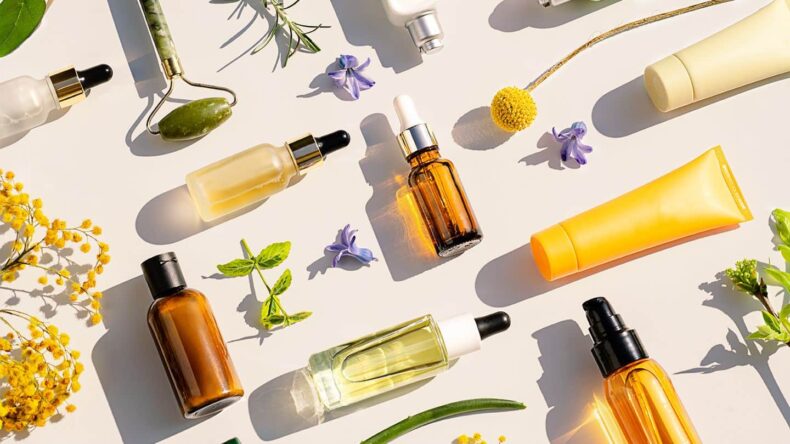Who doesn’t enjoy having glowing and dewy skin? Everyone should feel confident in their appearance and strive to look their best. But in order to have flawless skin, one must comprehend the significance of adhering to a regular skin care routine. Your skin might begin to age and lose its youthful shine as you get older because your skin cells replenish less regularly.
The biggest organ in your body is your skin. It can be difficult to protect it against external toxins and chemicals, but what you consume every day has a much greater impact. Inflammation, acne outbreaks, and early ageing of the skin can all result from a diet strong in sugar and processed foods. We should keep a check on what we are eating. A lack of proper nourishment may show itself in the skin. Skin and nails require certain nutrients from diet, such as essential fatty acids, protein, and vitamins A, B, C, D, and E, to carry out their vital tasks.
(Image source- frontiers)
However, a person must follow a few guidelines based on their skin type, combine them with regular exercise, and use skin treatments under the guidance of a dermatologist in order to see changes in their skin.
The initial step should be determining your skin type, and the products should then be chosen based on that. Skin types range from normal to combination, dry to oily, and so on. There are many alternatives available on the market for various skin products, but we must keep in mind that not every product is good for every kind of skin.
Four Golden Rules for glowy and dewy skin
1) Cleansing- Facial cleansers can be a game changing thing for your skin. It helps in removing impurities, dirt, germs, chemicals and makeup which can be harmful and irritate your skin. To find out a perfect cleanser can be a task, as sometimes, soaps or some products can be harsh on our skin and strip our skin.The ideal sort of face cleanser is a mild one that eliminates pollutants without removing the natural oils that keep your skin nourished and looking healthy. We should look for ingredients like Glycolic acid, Niacinamide, and water based cleansers in the market.
2) Toning- Consider them as supplements that offer an additional burst of nutrients to assist the other products in your routine absorb better while still harmonising your skin’s tone. It seals pores and aids in repairing and regulating the pH balance of your skin. Additionally, it aids in getting the skin ready for better moisturiser absorption.We can say that it acts as a primer for the rest of our skincare routine.
Some hero ingredients to look for while choosing your toner are- Hyaluronic acid to boost hydration and provide you with plump skin, Rose water and Green tea which helps in minimising the pores, Alpha and beta hydroxy acids, Vitamin C and E.
3) Moisturise- Despite being crucial, facial cleansers only make up one third of a skincare routine. The combination of a face cleanser and moisturiser keeps skin looking and feeling healthy. Try to choose a fragrance free product suitable to your skin type. Make sure it is labelled as “Non-Comedogenic”, which means it doesn’t block pores or trigger acne.
You should apply it twice a day (day and night) after washing your face. Take an almond size amount that should cover the whole surface area of your face and should apply the leftover product on your necklines. Moisturisers act as a barrier to your skin and help in providing it the required amount of hydration that it needs.
4) Sunscreen is the last and the most important step that helps in protecting your skin’s appearance from harmful UV rays, sunburns, tanning, skin cancer and premature ageing.Before learning about the functions of sunscreen and how to properly apply it, we first comprehend what SPF is.
SPF (Sun Protection Factor) A sunscreen’s spf rating indicates how well it will shield skin from UVB rays, which are responsible for sunburn and other skin-damaging effects like skin cancer.
For general use, choose sunscreen with an SPF of at least 30, or if you spend a lot of time outdoors and are susceptible to sunburn, consider sunscreen with an SPF of at least 45 and preferably 60.
How to apply it?
As a result, methods and suggestions have been developed, such as applying our sunscreen twice, using the popular technique “Three finger rule” which means to use three finger lengths of sunscreen, and using 1/4 teaspoon of sunscreen to avoid the confusion. All of these strategies are intended to persuade individuals to apply sunscreen more liberally since, when left to their own devices, people tend to apply too little. We should always use sunscreen beneath our makeup and after moisturizing the skin.













